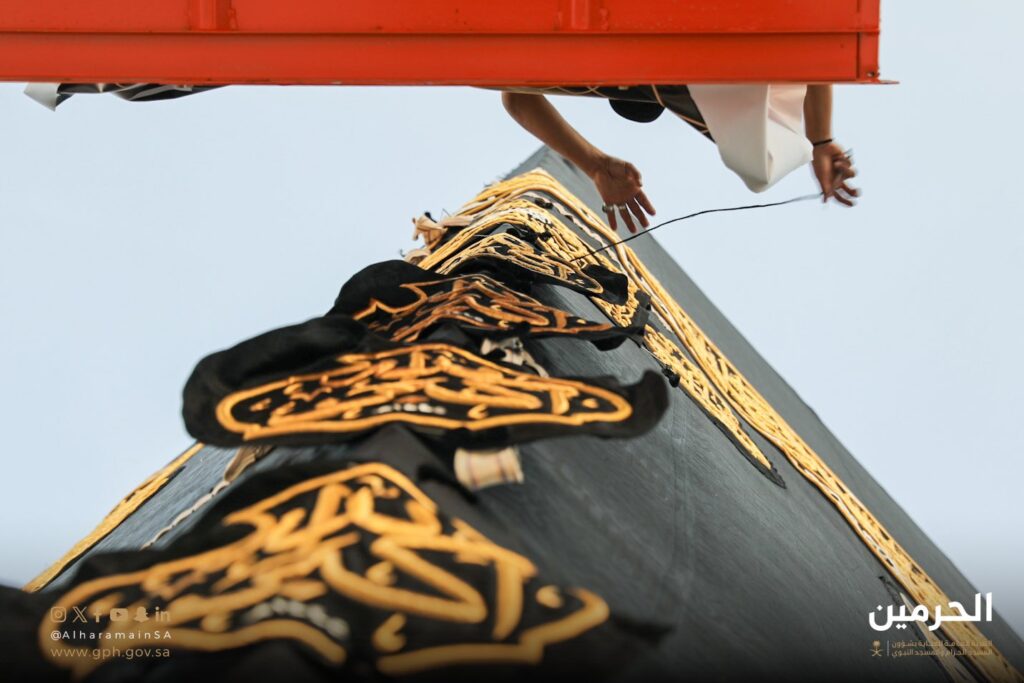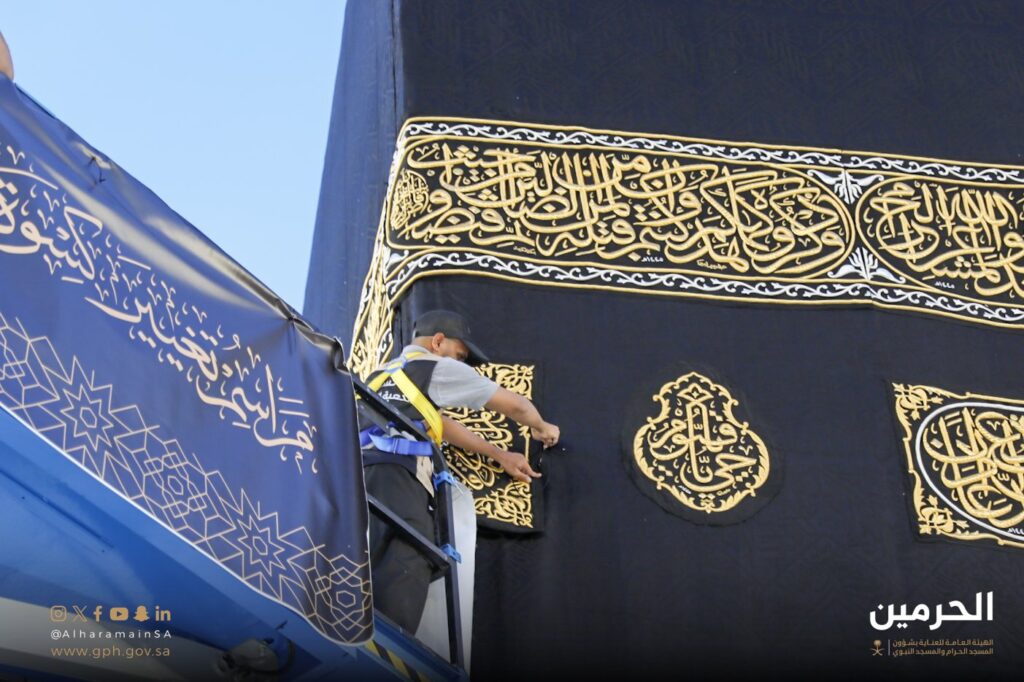
The Kiswah of the Kaaba (Ghilaf-e-Kaaba) at the Grand Mosque in Makkah, Saudi Arabia, has been changed in an intricate annual ritual. The ceremony took place on Sunday morning, July 7, the first of Muharram, marking the beginning of the new Islamic year of 1446.
The process was carried out by the General Presidency for the Affairs of the Grand Mosque and the Prophet’s Mosque under the supervision of the President of the Presidency, Sheikh Dr Abdul Rahman bin Abdulaziz Al-Sudais.
A team of 159 technicians and craftsmen from the King Abdulaziz Complex for Holy Kaaba Kiswah completed a ten-step process to replace an old cloth with a new one, the Saudi Press Agency (SPA) reported.
The team, based on their respective specializations, dismantled the old Kiswah, installed the new one, and fixed it at the corners and roof of the holy Kaaba.
Watch the videos here
The installed Kiswah, weighing 1,350 kilograms and standing 14 meters high, consists of four separate sides and a door curtain.
To install the Kiswah, each side of the four sides of the Kaaba was lifted separately to the top, spread over the old side, fixed by tying and lowering, then moved up and down, lowering the old side from below and leaving the new side.
The process was repeated four times for each side until the Kiswah was completed and then the belt was weighed in a straight line by sewing it.


The sides and corners of the covering are fixed by sewing from the top to the bottom, followed by the placement of the curtain, which requires skill and time. A cut was made in the black fabric to match the size of the curtain, approximately 3.33 meters wide and 6.35 meters long.
Three openings were created in the black fabric to attach the curtain from underneath, and the edges were then sewn into the fabric on the Kiswah.
The Kiswah uses 1,000 kilograms of raw silk, 120 kilograms of gold and 100 kilograms of silver threads for their belt.
The number of gilded pieces of the Kaaba’s covering is 53, including 16 pieces for the belt, 7 pieces under the belt, 4 pendants, 17 lanterns, 5 pieces for the door curtain, a piece for the Yemeni corner, 2 kinars, and a gutter ornament.
Eight cranes are used to hoist the Kiswah, sew four corners, and insert lantern designs and motifs onto the new Kiswah of the Kaaba.



Two hundred trained, qualified, and specialized citizens are employed at King Abdulaziz Complex, including professional workers and administrators.
The complex includes several departments: dyeing and automated weaving, hand weaving, printing, belt-making, gilding, sewing, and assembly of the Kiswah.

It houses the world’s largest sewing machine, a 16-meter computer-controlled system, and various support departments including laboratory, administrative services, quality, public relations, health, and occupational safety.
On May 22, in preparation for the start of Haj 1445 AH-2024, the authorities in Makkah raised the Kiswah to prevent soiled and damaged areas during pilgrims’ circumambulation of the Kaaba.



